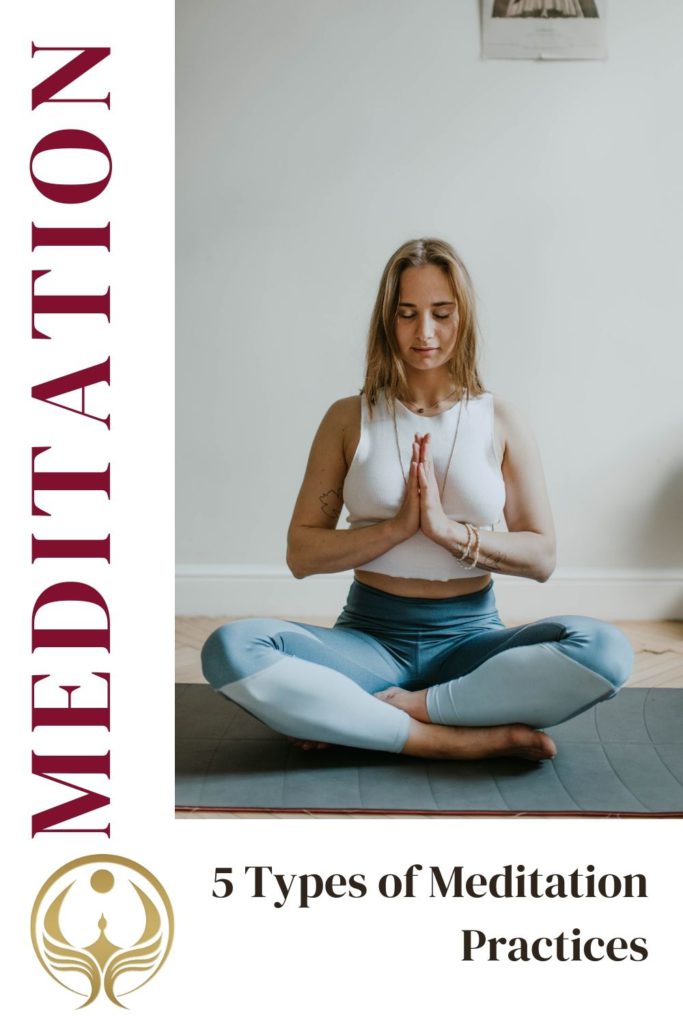By Jennifer McDougall
In today’s fast-paced world, finding a moment of peace can be challenging. Meditation offers a respite, a chance to slow down and connect with ourselves. Meditation is a practice of focusing and quieting the mind, leading to increased awareness and a sense of inner peace. While the concept is simple, the practice comes in many forms. Here, we explore five different meditation practices, each offering a unique pathway to mindfulness and tranquility.
1. Mindfulness Meditation: The Art of Being Present
From Buddhist teachings, mindfulness meditation is one of the most widely practiced forms in the Western world. This technique focuses on being intensely aware of what you’re sensing and feeling in the moment, without interpretation or judgment.
How to Practice:
- Find a quiet and comfortable place. Sit in a chair or on the floor, keeping your back straight.
- Pay attention to your breath. Notice the sensation of your breath as it enters and leaves your body.
- When your mind wanders, gently bring your focus back to your breath.
- Expand your awareness gradually to sounds, sensations, and thoughts.
Benefits:
- Reduces stress and anxiety.
- Enhances emotional health and resilience.
- Improves focus and attention.
2. Transcendental Meditation: Beyond the Physical Realm
Transcendental Meditation (TM) is a simple, natural technique popularized in the 1950s by Maharishi Mahesh Yogi. It involves the silent repetition of a mantra — a word or sound — to settle the mind into a state of profound rest and relaxation.
How to Practice:
- Sit in a comfortable position with your eyes closed.
- Silently repeat the mantra given to you by a certified TM teacher.
- Practice for 20 minutes twice a day.
Benefits:
- Reduces stress and anxiety.
- Promotes a sense of calm and peace.
- Enhances self-awareness and self-actualization.
3. Guided Visualization: A Journey of the Mind
Guided Visualization or Guided Imagery is a technique that involves imagining a scene in which you feel at peace, free to let go of all tension and anxiety. A guide or teacher often leads it.
How to Practice:
- Find a quiet place and close your eyes.
- Listen to a guided visualization recording or instructor.
- Vividly imagine the peaceful and calming scenario described.
- Engage all your senses to enhance the experience.
Benefits:
- It enhances relaxation and reduces stress.
- Improves mood and emotional well-being.
- It can be used for specific goals like reducing anxiety or improving sleep.
4. Loving-Kindness Meditation: Cultivating Compassion
Loving-kindness meditation, or Metta meditation, directs well-wishes towards others and oneself. It stems from the Buddhist tradition and aims to cultivate an attitude of love and kindness.
How to Practice:
- Sit comfortably with your eyes closed.
- Start by directing kind thoughts towards yourself.
- Gradually expand these thoughts to others — loved ones, acquaintances, and even those with whom you have difficulties.
- Repeat phrases like “May I/you be happy, may I/you be healthy.”
Benefits:
- Increases feelings of Compassion and empathy.
- Reduces negative emotions like anger and resentment.
- Enhances interpersonal relationships and self-acceptance.
5. Zen Meditation (Zazen): The Practice of Insight
Zen meditation, or Zazen, is a form of meditation that can be part of Buddhist practice. It involves observing the thoughts and sensations that pass through the mind and body without becoming attached to them.
How to Practice:
- Sit on a cushion (zafu), keeping the back straight.
- Half-close your eyes and focus on your breathing.
- Let thoughts and sensations come and go without judgment or attachment.
Benefits:
- Encourages a state of calm and balance.
- Fosters a deeper understanding of the self and the nature of existence.
- Improves concentration and mindfulness.
Each type of meditation offers a unique approach to achieving mental clarity and emotional calmness. Whether you’re drawn to the simplicity of mindfulness, the structured approach of Transcendental Meditation, the imaginative journeys of Guided Visualization, the compassionate focus of Loving-Kindness, or the introspective nature of Zen, there’s a meditation practice suited to your needs and preferences.
At its heart, meditation is a journey of self-discovery and inner peace. Incorporating any of these practices into your daily routine opens the door to enhanced mental clarity, emotional stability, and a deeper understanding of your mind and body. Embrace the practice that resonates with you and embark on your path to mindfulness and well-being.





